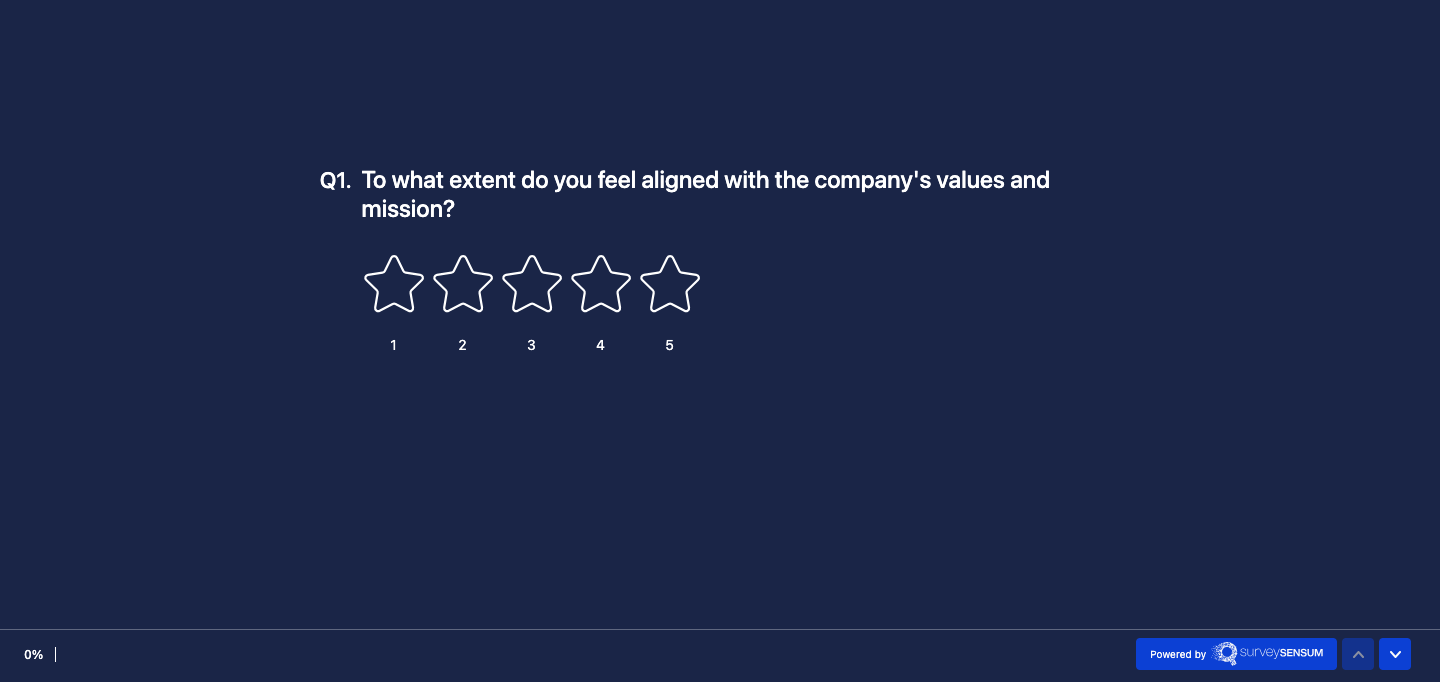

In today’s changing workplaces, where happy workers mean happier customers, understanding how your team feels is really important.
Also, businesses that prioritize employee engagement experience a remarkable 89% increase in customer satisfaction.
But what exactly is employee engagement, you ask?
Well, think of it as an approach that fuels productivity, creativity, and overall happiness in the workplace. When your employees are engaged, they’re not just showing up to collect a paycheck—they’re invested in their work, committed to the company’s goals, and willing to go the extra mile to make things happen.
But here’s the million-dollar question: how to gauge employee engagement?
Sure, traditional annual surveys have been the go-to, but let’s face it—they’re cumbersome and take significant time and effort to complete.
That’s where PULSE SURVEYS step in!
Pulse surveys go beyond data collection; they’re about driving action to enhance employee experience.
With a robust employee feedback tool, you can quickly find out what’s working well and what needs to be improved, helping to make the workplace better for everyone.
And guess what – I’ve got 10 simple questions that can help you find out how your team is feeling.
So, let’s explore these questions!
10 Essential Pulse Survey Questions for Measuring Employee Engagement
Here are the 10 essential pulse survey questions for employees based on different parameters to help you create an exceptional employee engagement culture:
1. Assessing Job Satisfaction
Question: “To what extent are you satisfied with your current role?”

What does this question evaluate:
employee satisfaction. Unlike traditional annual surveys, which do not capture changes in job satisfaction in real-time, pulse surveys allow organizations to identify emerging issues promptly and implement targeted interventions to address them.
2. Evaluating Team Dynamics
Question: “How would you rate the strength of teamwork and collaboration within your team?”

What does this question evaluate: This question sheds light on the interpersonal dynamics within a team. It assesses how well team members work together, communicate, and collaborate. Strong teamwork positively impacts employee engagement, job satisfaction, and overall productivity.
3. Leadership Effectiveness

What does this question evaluate:
This question helps understand how employees view their leaders’ ability to communicate, inspire, and guide. It directly impacts employee morale, trust, and commitment.
Deliver Exceptional Customer Experience with SurveySensum
4. Recognition and Appreciation
Question: “To what extent do you feel your contributions are recognized and appreciated by your manager and peers?”

What does this question evaluate:
This question examines employees’ perceptions of how their contributions are acknowledged and appreciated by both their managers and peers. It provides insights into the effectiveness of recognition efforts and their impact on employee morale, motivation, and job satisfaction.
5. Opportunities for Growth and Development
Question: “Do you feel you have sufficient opportunities for professional growth and development in your current role?”

What does this question evaluate: This question explores employees’ perceptions of the availability of growth opportunities within their current role and the organization. It provides insights into the effectiveness of development programs and initiatives and their impact on employee engagement and satisfaction.
6. Work-Life Balance
Question: “How well does the organization support your work-life balance?”

What does this question evaluate: Work-life balance is crucial for employee well-being, satisfaction, and productivity. This question addresses the organization’s support for employees’ efforts to balance their work responsibilities with personal commitments. It underscores the importance of creating a supportive work environment that respects employees’ time outside of work and promotes their overall well-being.
7. Communication Channels
Question: “How clear and open do you find the communication channels within the organization?”

What does this question evaluate:
This question assesses employees’ perceptions of the clarity and openness of communication channels, including formal and informal channels of communication. It highlights the importance of transparent and accessible communication in building trust, fostering collaboration, and promoting a positive work culture.
8. Alignment with Organizational Values
Question: “To what extent do you feel aligned with the company’s values and mission?”

What does this question evaluate: Understanding employees’ alignment with organizational values allows organizations to reinforce cultural alignment, strengthen employee engagement, and promote a sense of belonging. It provides insights into the strength of cultural alignment and its impact on employee engagement, motivation, and satisfaction.
9. Feedback Mechanisms
Question: “How satisfied are you with the feedback mechanisms in place for employee communication?”

What does this question evaluate: This question examines employees’ satisfaction with the feedback mechanisms in place for employee communication. It provides insights into the effectiveness of feedback channels, including their accessibility, frequency, and usefulness. Additionally, it evaluates the organization’s commitment to fostering open communication and employee engagement through feedback processes.
So, gather and analyze employees’ feedback with pulse surveys!
10. Overall Job Engagement
Question: “On a scale of 1 to 5, how engaged do you feel in your overall experience at this company?”

What does this question evaluate: By summarizing employee engagement with a single question, organizations can gain a broad understanding of the factors influencing employee satisfaction and commitment. This question provides a simple yet powerful tool for assessing and tracking employee engagement over time.
Conclusion
In conclusion, prioritizing employee engagement isn’t just a smart move—it’s a strategic imperative for any business looking to thrive in today’s competitive landscape. We’ve explored 10 essential pulse survey questions that can serve as powerful tools for unlocking employee engagement and driving organizational success. By regularly measuring employee sentiment through pulse surveys, companies can stay agile, responsive, and in tune with the needs and aspirations of their workforce.
However, without the right tool, your endeavors may fall short. A robust employee feedback solution like SurveySensum can make a substantial impact. With SurveySensum, you can design and deploy pulse surveys effortlessly, gathering valuable insights into various aspects of employee engagement, such as teamwork dynamics, leadership effectiveness, job satisfaction, and more.
These insights are valuable inputs for strategic decision-making, enabling organizations to implement targeted initiatives to enhance employee satisfaction, retention, and overall organizational success.

















